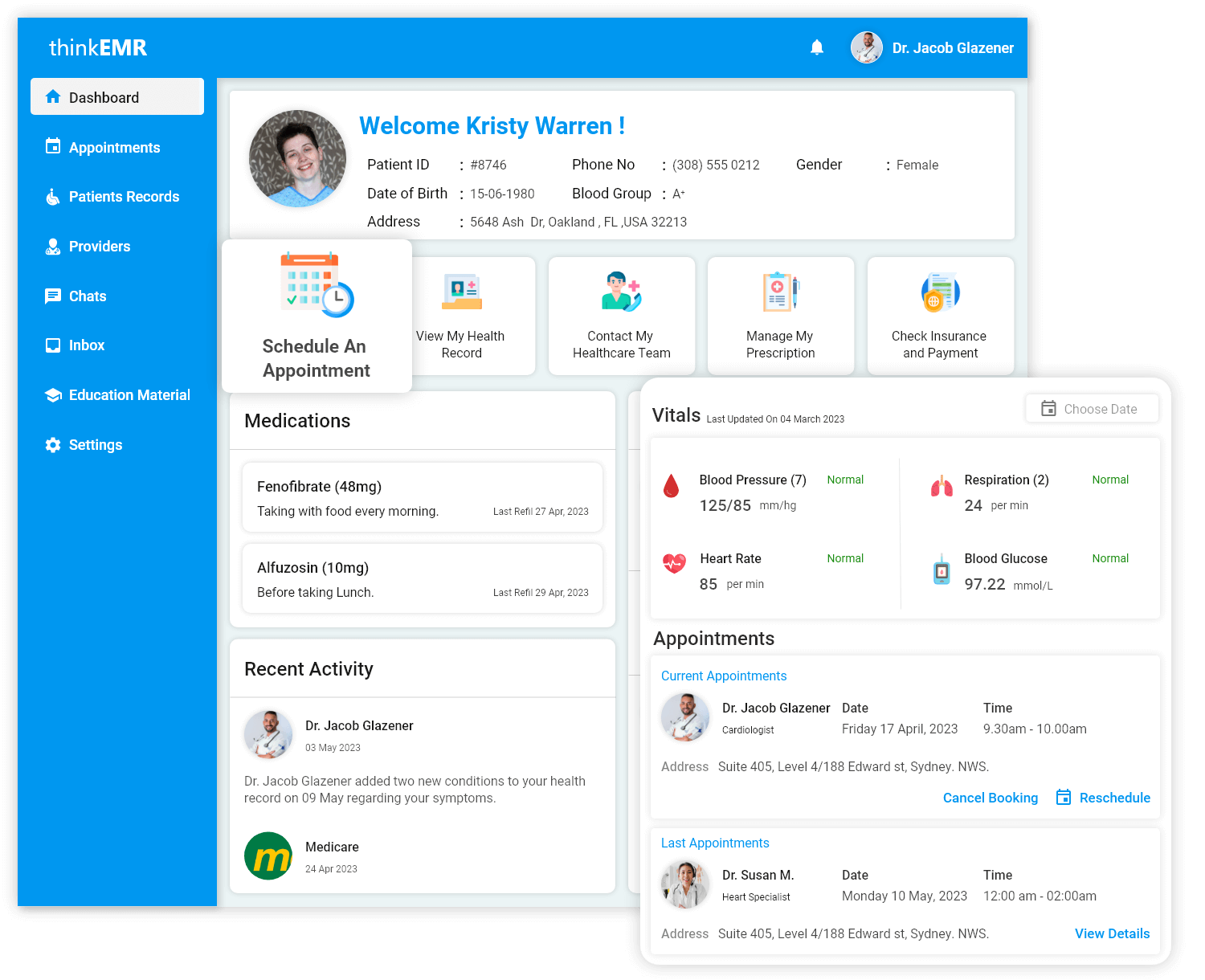
Everything You Need To Know About EMR Software Development: Benefits, Challenges, Solutions
Electronic Health Record (EHR) Software has revolutionized how healthcare data is managed. It offers a digitized version of patient information and optimizes workflows. Moreover, it provides comprehensive patient health data, allowing healthcare providers to make more informed clinical decisions. However, developing efficient EHR/EMR software has its own set of challenges.
This article discusses the benefits of EHR software development, the challenges in developing EHR software, and solutions to those challenges.
Benefits of EMR Software Development
- Improved Patient Care and Safety
EMR software enhances patient care and safety by centralizing medical records facilitating accurate and timely information sharing among healthcare professionals. It minimizes errors through automated alerts for allergies and drug interactions and streamlines workflows for faster diagnosis and treatment decisions. It enables remote access to critical patient data, ensuring comprehensive and informed care.
- Efficient Workflow Management
It streamlines healthcare workflows by digitizing patient data, appointments, prescriptions, etc. It enables efficient information sharing among healthcare professionals, reduces manual tasks, enhances data accuracy, and facilitates quick decision-making. This results in improved patient care, reduced administrative burdens, and improved workflow management.
- Data Analytics and Decision Support
EMR software employs data analytics to process medical records, generating insights from patient information. Decision support tools then utilize these insights to aid healthcare professionals in making informed treatment decisions, improving patient care, and optimizing medical processes for better outcomes.
- Interoperability and Data Sharing
EMR software achieves interoperability and data sharing through standardized formats like HL7 and FHIR, allowing different systems to exchange patient information seamlessly. It ensures efficient communication between healthcare providers, enabling accurate and timely treatment. Additionally, APIs and secure protocols facilitate secure data exchange while maintaining patient privacy and data integrity.
Challenges in EMR Software Development
- Data Security and Privacy
EMR software development faces challenges in ensuring robust data security and privacy. Safeguarding patient records from unauthorized access, implementing encryption, adhering to compliance regulations (like HIPAA), managing user authentication, and preventing data breaches demand meticulous design and continuous updates to counter evolving cyber threats while maintaining seamless usability.
- User Adoption and Training
EMR software development faces challenges in user adoption and training due to complex interfaces, resistance to change from medical staff, varying tech proficiency, and time constraints for training. Balancing usability, comprehensive training, and seamless integration is essential for successful adoption.
- Integration with Legacy Systems
Integrating EMR software with legacy systems poses challenges due to disparate technologies, data formats, and communication protocols. Ensuring data consistency security, and maintaining system functionality during integration while addressing compatibility issues and potential disruptions are critical hurdles in development.
- Scalability and Performance
Due to complex data processing, varying workloads, and real-time demands, EMR software development faces challenges in ensuring efficient scalability and performance. Balancing resource allocation, optimization algorithms, and maintaining responsiveness while handling large datasets are critical hurdles in delivering a reliable and high-performing EMR system.
Solutions to EMR Software Development Challenges
- Robust Authentication and Authorization
To develop robust authentication and authorization in EMR software development, one must consider using strong multi-factor authentication (MFA) to add an extra security layer. Try implementing solid and secure passwords and do regular password updates. To use secure authorization, implement role-based access control (RBAC) to ensure that the users only have access to the necessary resources. Regularly review and update user permissions to prevent unauthorized access.
- Intuitive User Interface
Consider developing a role-specific User Interface that is designed for generic users. The American Medical Informatics Association has set 14 usability principles to design EMR application interfaces. With a good User interface, we can reduce learning cure and increase the EMR Adoption rate.
- API Integration and Middleware
To implement API integration and middleware in EHR/EMR software, design API endpoints for data exchange, employ middleware for request processing, and ensure security and data integrity. Integrate EMR with external systems, utilizing middleware to manage data flow, transformation, and authentication, enhancing interoperability and functionality.
- Cloud Technology and Infrastructure
Cloud technology has changed how EMR software is developed by offering scalable and flexible infrastructure. It enhances data storage, processing, and accessibility while ensuring security and compliance. Developers leverage cloud services to expedite development, improve collaboration, and deliver efficient EMR solutions for healthcare providers.
Conclusion
EMR software development has revolutionized healthcare management through digitized patient records and streamlined workflows. Its benefits include improved patient care, efficient workflow management, data-driven decision support, and enhanced data sharing. However, challenges like data security, user adoption, legacy system integration, and scalability persist. Addressing these challenges with robust authentication, intuitive interfaces, API integration, and cloud technology can offer effective EMR solutions that revolutionize patient care while safeguarding data and privacy.

Comments (0)